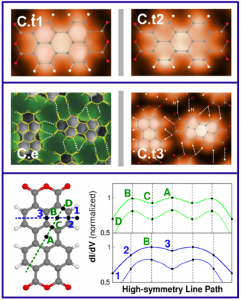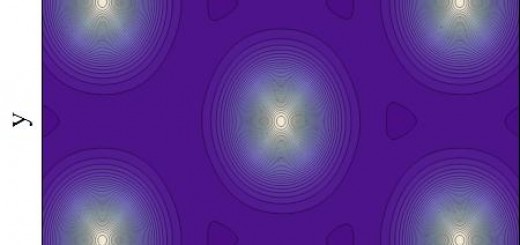Improvement of STM Resolution with H-sensitized Tips
 Wednesday, 3th October 2012. 12:00-13:00
Wednesday, 3th October 2012. 12:00-13:00
José Ignacio Martínez
Departamento de Física Teórica de la Materia Condensada, UAM
ABSTRACT:
The general motivation for this contribution is the remarkable attention that the improvement of spatial resolution in STM is attaining in diverse fields such as Surface Science, Nanoelectronics and Catalysis [1]. In particular, recent Scanning Tunneling Hydrogen Microscopy (STHM) experiments on PTCDA/Au(111) have shown unprecedented intramolecular and intermolecular spatial resolution [1, 2]. The origin of this surprising behavior is not understood yet; in particular, the way in which H2 molecules in the STM chamber may affect the STM image is not clear. In our work, we analyze the effect on the STM images of both atomic and molecular hydrogen interacting with tip or sample, using an accurate STHM theoretical simulation technique that includes a detailed description of the electronic structure of both tip and sample [3]. To the best of our knowledge, this is the first theoretical simulation of STHM, which is a very challenging task. Notice that in the widely used Tersoff-Hamman approach to simulate STM images, the STM current is simply proportional to the density of states of the sample at the tip position. Thus, within a Tersoff-Hamman approach it is not possible to take into account the influence on the STM image of an H2 atmosphere in the STM chamber.
We find that the STHM resolution enhancement is due to atomic H adsorbed on the tip [4]. At first sight, this is a surprising result, since it is considered that H2 does not dissociate on Au surfaces. However, the situation is different for Au clusters and nanostructures, that are known to be good catalysts. In our work, the dissociation of H2 molecules on the Au STM tip is further corroborated by state-of-the-art total-energy calculations using a plane- wave DFT code and the PBE0 exchange-correlation functional. Finally, we analyze the physical origin of the improvement of STM resolution; we find that the adsorbed H-atoms induce important changes in the Density of States (DOS) at the Fermi level (EF) of the tip, increasing its total value, and making it more directional. Also, due to the interaction with the H-decorated tip, EF is shifted to the middle of the PTCDA LUMO peak, increasing dramatically the DOS of the sample at EF. The combination of these effects gives rise to the enhanced STHM intramolecular resolution, as well as the increased visibility of the intermolecular bonds, explaining the experimental observations [4]. Besides, the theoretical formalism permits, by construction, a detailed analysis of the different orbital-component contributions, providing an accurate idea about the formation of the STM images [4].
[1] L. Gross, Nat. Chem. 3, 273 (2011).
[2] C. Weiss, C. Wagner, C. Kleimann, et al., Phys. Rev. Lett. 105, 086103 (2010).
[3] J. I. Martínez, et al., Phys. Stat. Sol. B 248, 2044 (2011); Org. Electron. 13, 399 (2012).
[4] J. I. Martínez, E. Abad, C. González, F. Flores, J. Ortega, Phys. Rev. Lett. 108, 246102 (2012).


















